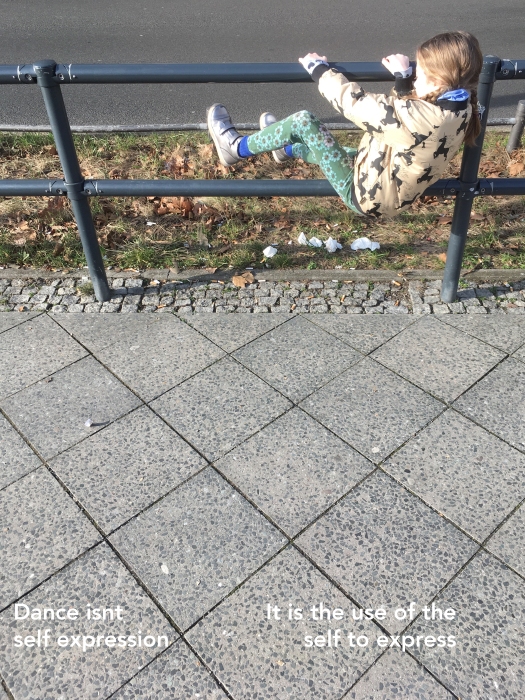
“The point of movement scores/improvising and subsequent discussion is to compel students to make specific aesthetic choices and then to gain consciousness both of the particular choices they have made and the reasons why they (or someone else) might make a similar or different choice.”
The original text below:
“The point of compositional prompts and subsequent discussion is to compel students to make specific aesthetic choices and then to gain consciousness both of the particular choices they have made and the reasons why they (or someone else) might make a similar or different choice.” (205)
Larry Lavender Predock-Linnell & Jennifer Predock-Linnell (2001) From Improvisation to Choreography: The critical bridge, Research in Dance Education, 2:2, 195-209
movement influenced cognition

pg 152.
Gibbs, Raymond W. “Imagery, Memory, and Reasoning.” In Embodiment and Cognitive Science. Cambridge: Cambridge University Press, 2005.
Beyond Meta

Dance Node

Binary

oti
If ballet is the “negation of weight” (Kuppers 2000, 123), I would say that Contact Improvisation is the negotiation of weight.
Petra Kuppers (2000) Accessible Education: Aesthetics, bodies and disability, Research in Dance Education, 1:2, 119-131.
Context

Improvisation is not an exercise
“We know that improvisation is one of the canonical exercises of universal teaching.” – J. Rancière
While I do agree that teaching, whatever the subject, involves a healthy measure of improvising. I would, however, say that improvisation is not an exercise, but a temporal relationship that can be exercised during a given exercise.
projects of the moment

